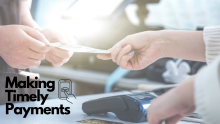Protect Your Money: Smart Ways to Prevent Credit Card Fraud

As digital payments become more popular, credit card fraud is also on the rise. Fraudsters steal card details through various methods, such as phishing scams, data breaches, and skimming devices, allowing them to make unauthorized purchases or withdraw money. This can lead to financial losses, stress, and time-consuming disputes for victims. Understanding how fraud occurs, recognizing suspicious activities, and taking preventive measures like securing card information, enabling transaction alerts, and using strong passwords can help reduce the risk. Additionally, knowing the right steps to take if fraud happens—such as reporting it to the bank, freezing the card, and filing a complaint—can minimize damage and improve financial security.
What is Credit Card Fraud?
Credit card fraud happens when someone wrongly uses another person’s card details to buy things or take out money without permission. This can happen in different ways, such as:
- Stealing a physical card and using it for payments.
- Copying card details with hidden devices at ATMs or payment machines.
- Hacking online accounts to make purchases without the owner knowing.
- Tricking people into sharing their card details through fake emails or messages (phishing).
Knowing how these scams work can help people stay safe and protect their money.
How Credit Card Fraud Happens
Fraudsters use different tricks to steal credit card details. Here are some common ways they do it:
- Physical Card Theft: If a thief gets hold of a physical credit card, they can use it for purchases until the owner reports it stolen and the bank blocks it.
- Skimming and Cloning: Scammers place hidden devices on ATMs or payment machines to copy card details. They then create fake cards with the stolen data to make unauthorized transactions.
- Phishing Scams: Fraudsters send fake emails, texts, or calls pretending to be from a bank, tricking people into sharing their card numbers, PINs, or passwords.
- Data Breaches: Hackers break into company databases and steal stored credit card details. They may sell this information online, allowing criminals to use it.
- Account Takeover Fraud: If a scammer gets access to a person’s banking or credit card account, they can change the password and make purchases without the owner’s permission.
- Card-Not-Present (CNP) Fraud: Thieves use stolen card numbers, expiration dates, and CVV codes to shop online, even without having the physical card.
- Public Wi-Fi and Malware Attacks: Unsecured public Wi-Fi can expose credit card details to hackers. Also, harmful software (malware) on a device can secretly record and steal card information.
Credit Card Fraud Detection
Banks and financial institutions use advanced systems to detect fraudulent activities. Some of the most common fraud detection methods include:
- Machine Learning Algorithms - AI-based systems analyze transaction data in real time, comparing it with historical patterns to identify unusual activity.
- Rule-Based Systems - Predefined rules help detect fraud by flagging transactions that don’t match typical spending patterns.
- Behavioral Analytics - Financial institutions track spending habits, transaction frequency, and locations.
- Fraud Scoring - Every transaction is assigned a risk score based on factors such as transaction amount, location, and purchase history.
How to Identify Credit Card Fraud
- Regularly check your credit card statements: Go through your credit card transactions often to spot anything unusual. Scammers sometimes test stolen card details by making small purchases first. If you see charges you don’t recognize, report them to your bank immediately.
- Monitor your credit reports: Keep an eye on your credit reports to make sure no one has opened accounts in your name. If you notice any unfamiliar credit cards, loans, or hard inquiries (requests to check your credit), it could be a sign of fraud. You can get a free credit report from official sources to stay updated.
- Be wary of debt collection calls: If you receive calls about unpaid bills or debts that don’t belong to you, it might mean someone has used your identity to take out loans or make purchases. Always verify the details before assuming the debt is yours, and report any suspicious activity to your bank or credit bureau.
How to Prevent Credit Card Fraud
- Never share your card information: Never disclose your card number, CVV, or OTP to anyone, even if they claim to be from your bank. Scammers often use phishing emails, calls, or messages to trick you into revealing sensitive details. Always verify the source before sharing any information.
- Shop only on trusted websites: Before making an online purchase, ensure the website has "https://" in the URL, indicating a secure connection. Avoid clicking on random links or pop-ups that may lead to fraudulent sites. Stick to well-known e-commerce platforms to reduce the risk of card fraud.
- Avoid storing card details online: Many websites offer the option to save your card information for convenience, but this can be risky if their security is compromised. Instead, enter your details manually each time or use a virtual card for added security.
- Use strong passwords and two-factor authentication (2FA): Create unique and complex passwords for your banking and shopping accounts to prevent unauthorized access. Enabling 2FA adds an extra layer of security by requiring a second verification step, such as a code sent to your phone or email.
- Set up transaction alerts: Activating SMS or email alerts for every transaction helps you stay informed about any suspicious activity. Regularly reviewing your bank statements ensures you can quickly detect and report unauthorized charges.
- Be cautious with public Wi-Fi: Public Wi-Fi networks are often unsecured, making it easier for hackers to intercept your data. Avoid making financial transactions when connected to public Wi-Fi. If necessary, use a Virtual Private Network (VPN) to encrypt your internet connection and enhance security.
- Keep your physical card secure: Always store your card safely and never leave it unattended in public places. When entering your PIN at an ATM or payment terminal, shield the keypad with your hand to prevent shoulder surfing or hidden cameras from capturing your details.
- Use a digital wallet: Digital wallets like Apple Pay, Google Pay, and Samsung Pay offer enhanced security by encrypting your card information. These wallets generate a unique transaction code instead of sharing your actual card details, reducing the risk of fraud.
How to Report Credit Card Fraud
- Contact Your Card Issuer: If you notice any unauthorized transaction, call your bank's customer care or visit the nearest branch immediately. Indian banks have a 24/7 toll-free number for fraud reporting. Some major banks also allow you to report fraud via net banking or mobile apps.
- Lock or Freeze Your Credit Card: Most Indian banks provide an option to temporarily lock or block your card through their mobile banking apps or websites. This helps prevent any further unauthorized transactions. If required, the bank can also issue a replacement card.
- Place a Fraud Alert on Your Credit Report: If you suspect fraud, contact credit bureaus like CIBIL, Experian, Equifax, or CRIF High Mark to place a fraud alert. This will notify lenders to verify your identity before approving any new loans or credit applications under your name.
- File a Report with Cyber Crime or Local Police: Report the fraud on the National Cyber Crime Reporting Portal (cybercrime.gov.in) or visit your nearest police station. If the fraud involves online transactions, you can also report it to the Reserve Bank of India (RBI) Ombudsman.
- Monitor Your Accounts Regularly: Keep checking your bank statements, SMS alerts, and UPI transactions for any suspicious activity. Indian banks send instant SMS/email alerts for every transaction, so reviewing them can help detect fraud early.
Final Thoughts
Credit card fraud is a serious threat, but by understanding how it happens and taking preventive measures, you can safeguard your finances. Always stay alert, monitor your accounts, and use security features provided by your bank. If you suspect fraud, report it immediately to minimize potential damage.




Leave a Reply